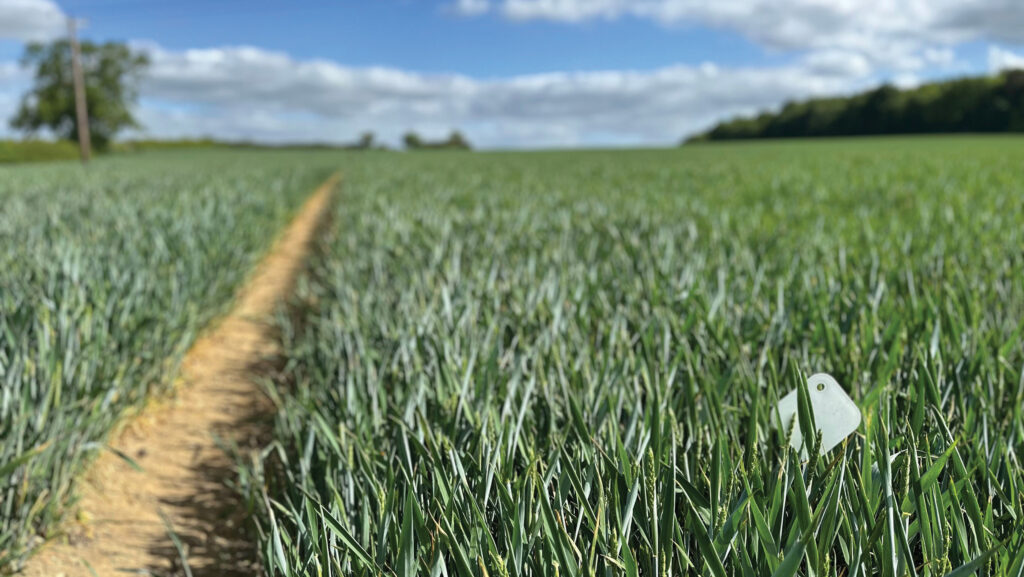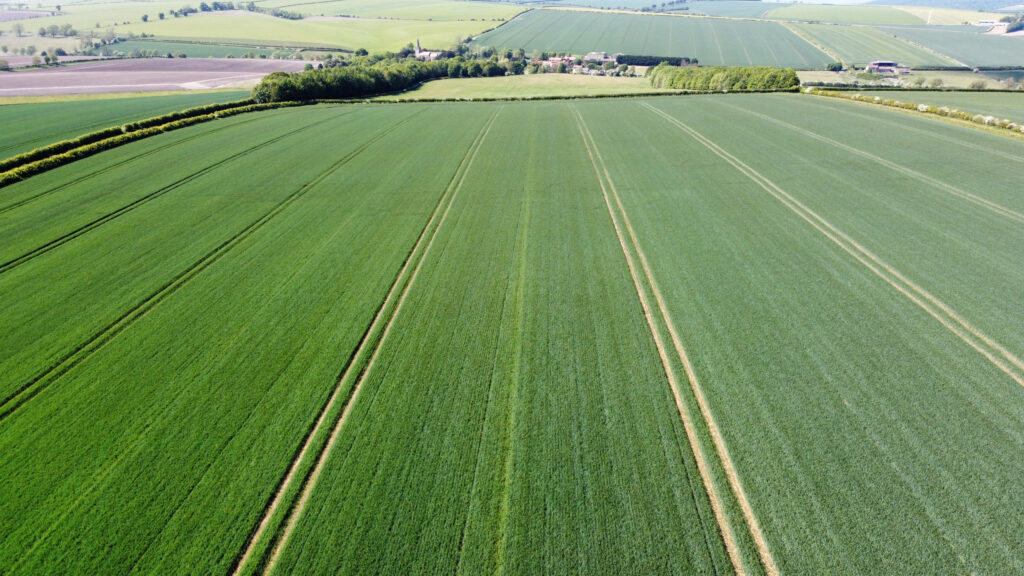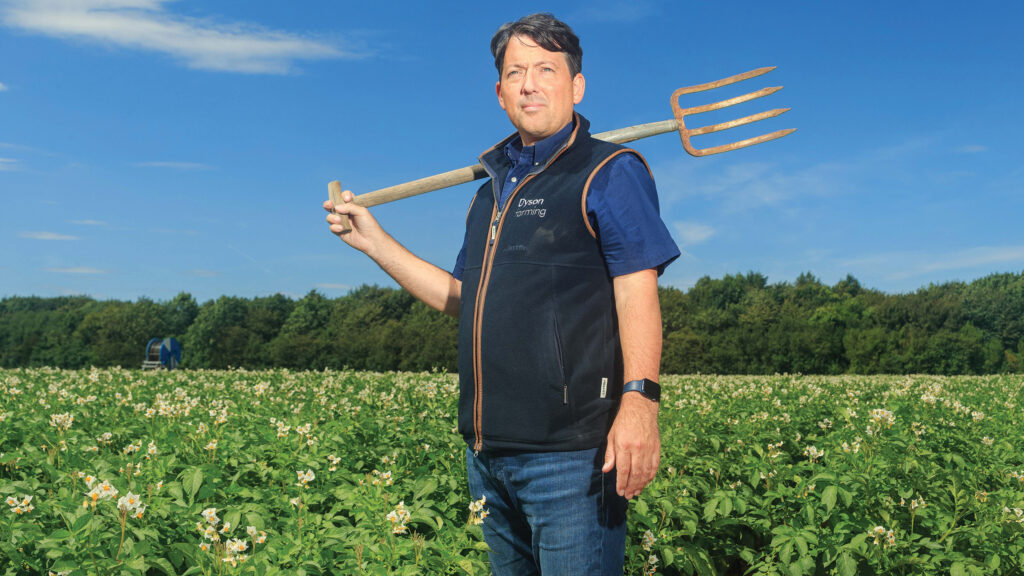Farmers reveal results of biological inputs trial
 The 25 in 2025 winter wheat trial plots © Will Charlton
The 25 in 2025 winter wheat trial plots © Will Charlton Two arable farmers were tasked with replacing 25% of their synthetic crop inputs with biological alternatives as part of a sustainable cropping project.
We catch up with them to find out why they got involved with the “25 in 2025” initiative launched by agrochemical firm UPL, and uncover the results.
See also: Why soil assessment should come before cultivations
Will Jones, Albanwise Farming

Will Jones © Will Charlton
For Will Jones, farm manager at the Albanwise Farming estate, Yorkshire, the trial was an opportunity to test if alternative inputs could successfully achieve a milling wheat premium.
“Anything we sell, we try to target the maximum premium,” he says.
Will is now going a step further, striving for sustainability premiums, associated with milling contracts that incorporate actions such as cover cropping, reduced tillage and use of organic manures.
The aim of the trial was to identify if a crop of Palladium winter wheat would meet milling specifications and receive a sustainability premium, under an alternative input approach.
“Overall yields were in line with expectations, although visually the trial area didn’t seem to carry quite the same fullness as the farm standard,” he explains.
The trial came in lower on protein at 12.2% compared with 13.4% for the farm standard, although the team were able to blend this to meet milling spec.
Both the trial and farm standard qualified for the sustainability premium.

© Will Charlton
Nutrition programme
The biostimulant Vitalroot was applied at early tillering to encourage rooting. No clear visual difference in terms of tillering or establishment was seen.
T1 and T2 had R-Leaf in the tank mix to replace 10% of the usual nitrogen programme.
This showed a visibly reduced green leaf area compared with the farm standard, particularly later in the season.
This was reflected in lower grain protein levels, highlighting the challenge of reducing nitrogen rates without compromising quality.
A late application of foliar N was replaced with amino acid-based biostimulant Ary-amin which aims to boost photosynthesis and reduce overall crop stress.
“Here, the crop recorded a reduction in grain protein, suggesting under our conditions it couldn’t fully compensate for the protein-building role of late N.
It’s a useful learning point about the limits of substitution when targeting milling specification,” he says.
Sugarox’s T6P was applied post-T3, aiming to encourage carbohydrate translocation into the grain.
“Crop colour, canopy retention and final output appeared similar to the untreated area, so under this season’s growing conditions the product impact was limited.”
Disease control
The trial area replaced tebuconazole at T0 with Iodus (laminarin) to stimulate the plant’s own defence mechanisms through the season.
“Both approaches looked the same, with no difference between the iodus and tebuconazole treatments. Early-season disease pressure was relatively low, so the benefit of one over the other was not apparent,” he says.
Will reduced the rates of his T1 and T2 fungicides to account for the addition of Thiopron (sulphur), a biologically based multisite.
“Again, there was no visual difference. Disease pressure remained low, which likely masked any differences between the reduced-rate fungicide with sulphur and the conventional programme.”
By T2, disease pressure had increased – particularly septoria – and the trial plots showed higher disease levels compared with the farm standard.
“This suggests the reduced-rate strategy combined with sulphur was not sufficient to maintain control under higher-pressure conditions,” says Will.
The farm standard received a fungicide at this timing, whereas the trial did not. As a result, the trial area carried significantly more disease later in the season, particularly on the upper canopy.
While this didn’t translate into a major yield difference once the field was weighed, it highlighted the potential risk of omitting a T3 entirely.
Next steps
Will notes that you can’t draw firm conclusions from a single season’s trial results.
“Farming systems are exposed to a huge number of variables.
The real value of this sort of work comes when you can build a dataset over several years and begin to separate seasonal noise from consistent trends,” he says.
The team at Albanwise are keen to continue the trial work to improve technical efficiency.
“Understanding where biostimulants, and adjusted fungicide strategies can deliver a return on investment will make the system more resilient,” he concludes.
Ben Abell, Dyson Farming

Ben Abell © Tim Scrivener
Ben Abell, head of agronomy at Dyson Farming, sees the key question surrounding biologicals as knowing when to use them and what to replace them with.
“Reducing inputs is an important goal, but the focus must be on how we deliver it. Any reduction has to be matched by margins that are maintained or improved. Our priority is achieving the right balance,” says Ben.
The trial consisted of a second winter wheat of the variety Beowulf. There was no statistical difference in yield found between the trial and control, with crops yielding an impressive 11.8t/ha.
Vitalroot was applied to help alleviate the effects of a less-than-ideal crop establishment.
The farm standard T0 fungicide tebuconazole, was switched to Iodus (laminarin) in the trial.
T1 saw a reduced rate of Inatreq and triazole for both with multisite folpet on farm standard, and trial area switch of the multisite to Thiopron (sulphur).
T2 saw a 50% rate of azoxystrobin used alongside sulphur versus a 30% rate of Miravis Era (adepidyn and prothioconazole) and 50% rate of tebuconazole as the farm-standard programme.
Additionally, R-Leaf, was included in the T1 and T2 tank mix in place of a 20% reduction in the dose of the second and third nitrogen applications. Molasses was included as a carbon source to feed biology.
Due to the reduced disease pressure, the trial was not as apparent as initially thought. However, Ben is keen to carry on trying biological products and reduce overall synthetic usage.
Was the “25 in 2025” initiative a success?
The goal was to demonstrate if biological alternatives could replace synthetic inputs without negatively impacting gross margin in winter wheat.
Despite a challenging 2025, results were positive – demonstrating it is commercially viable, says UPL. Each year presents challenges so the company intends to continue the project in 2026.

